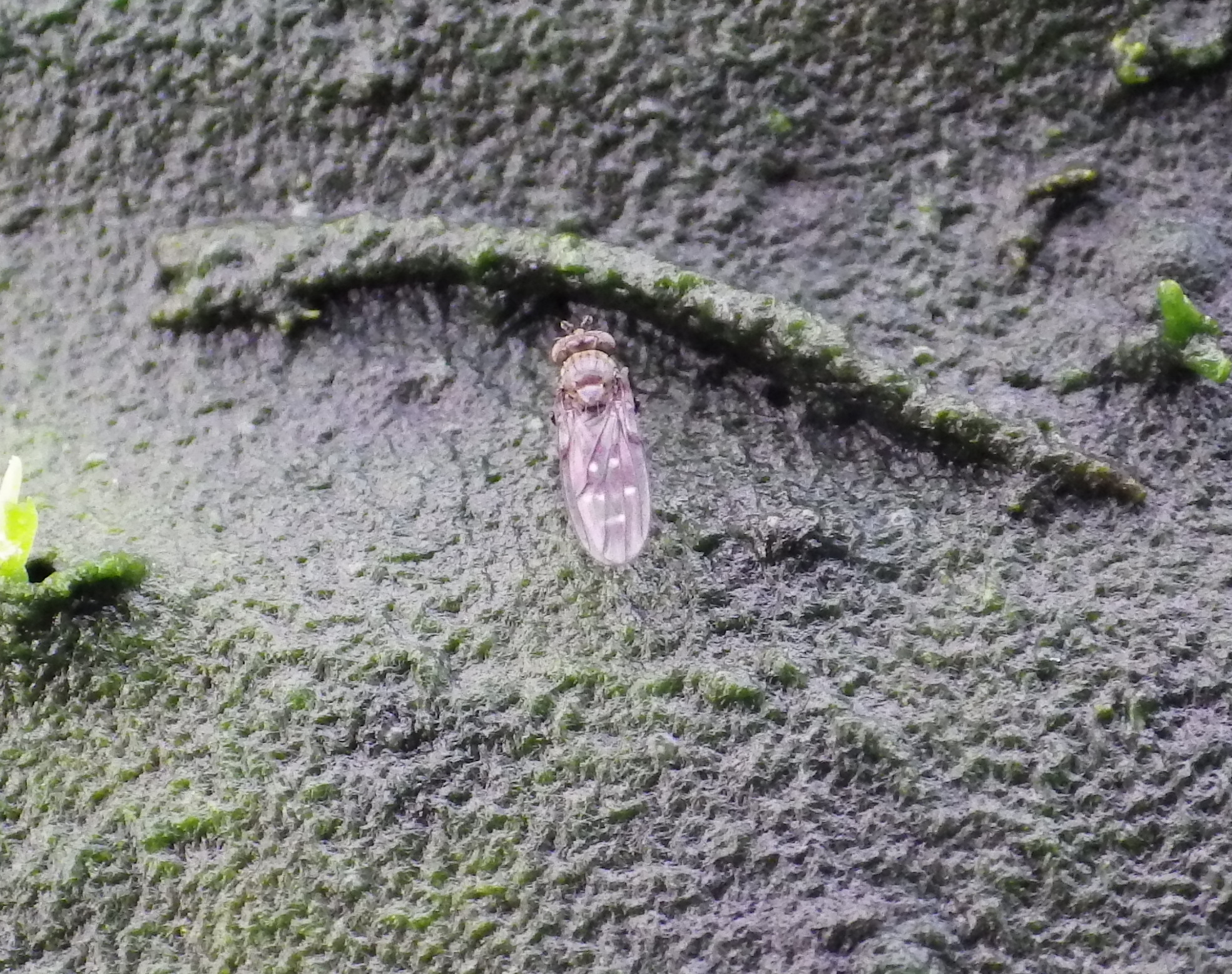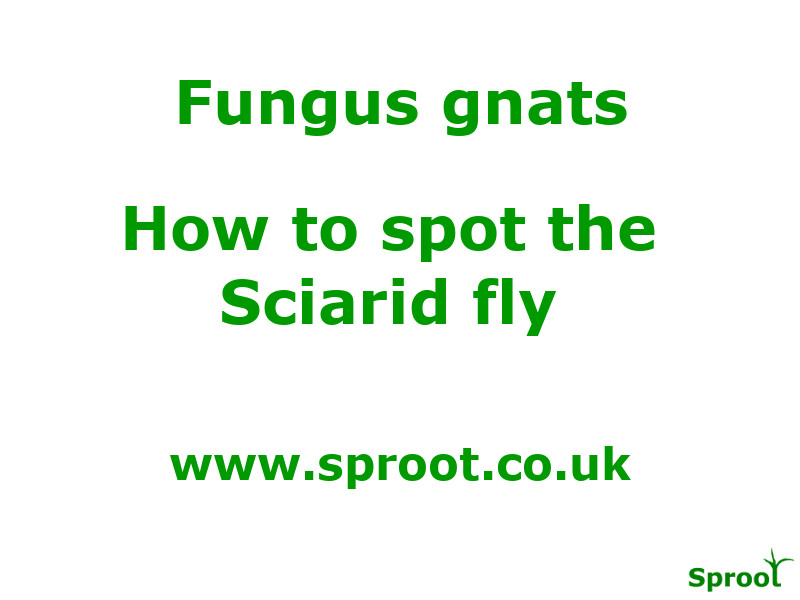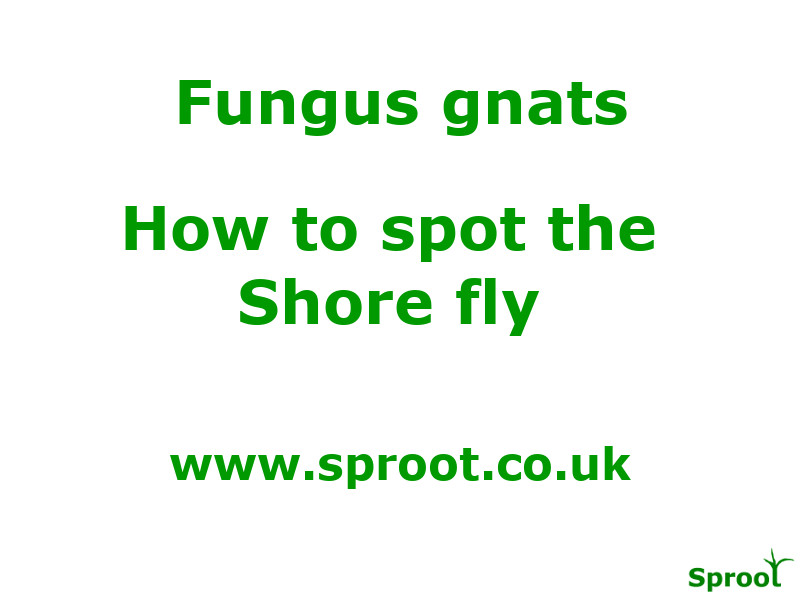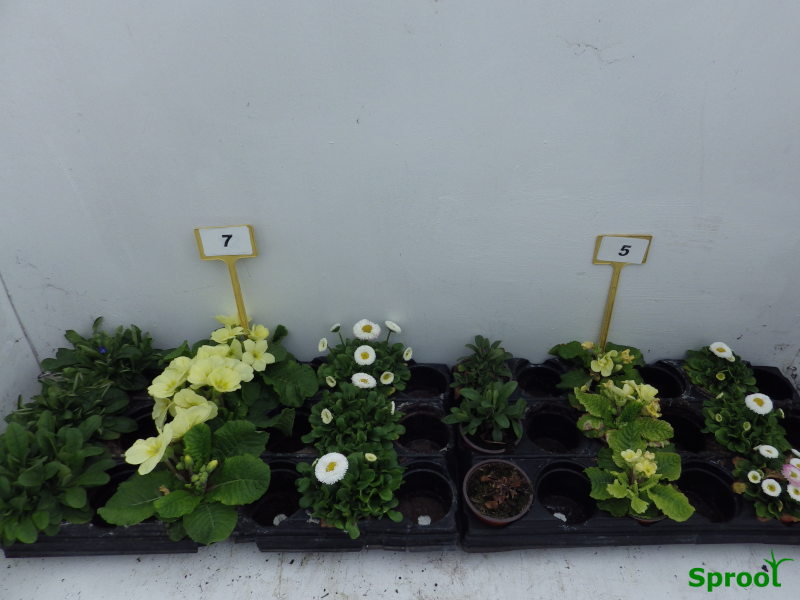To identify the type of fly infestation in your plants, it’s important to distinguish between fungus gnats (sciarid flies) and shore flies, as they need different treatments.
Key Differences Between Fungus Gnats and Shore Flies
- Fungus Gnats (Sciarid Flies):
- Size and Appearance: They have long legs, long, beaded antennae, and wings with a distinctive Y-shaped vein. They look like tiny mosquitoes.
- Behavior: Fungus gnats are slow-moving and usually run or crawl away rather than fly when disturbed.
- Harm to Plants: Their larvae are harmful as they feed on plant roots, causing damage to young seedlings and cuttings.
- Control: Easier to control using biological methods like nematodes, cultural techniques or chemicals.
- Shore Flies:
- Size and Appearance: They resemble tiny houseflies (around 4 mm long) with short, stubby antennae. Their wings have five pale spots, creating a “domino” effect.
- Behavior: Shore flies are very active flyers and take off quickly when disturbed.
- Harm to Plants: They are not directly harmful to plants, but they feed on algae and can become a nuisance.
- Control: Difficult to control due to their fast breeding in moist environments with algae.
Main Giveaway:
Fungus Gnats: Crawl or run when disturbed, reluctant to fly.
Shore Flies: Fly off quickly when disturbed.
By identifying these characteristics, you can effectively target the correct pest and apply the appropriate control methods.






